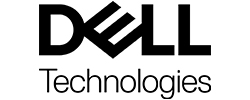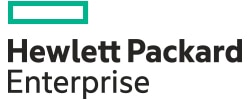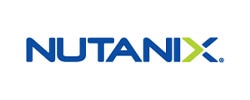May 09, 2024
IT Infrastructure Modernization Increases Agility and Efficiency
Infrastructure modernization improves performance and increases agility by streamlining processes, automating tasks and integrating systems. By upgrading their IT infrastructure, organizations can stay competitive.
Infrastructure modernization is the process of rationalizing existing IT architecture, encompassing hardware, software and operational frameworks. Organizations undertaking Infrastructure modernization efforts can reap many benefits, such as improved agility, operational efficiency, reliability and resilience. Existing legacy IT environments that are aging, fragmented or poorly integrated may struggle to handle current workloads and hamper future technology investments. Adoption of artificial intelligence (AI) and other emerging workloads has quickly become a focus for driving business evolution and success. Organizations that invest in modernized architectures better position themselves to develop and deploy these rising technologies, helping to maintain a competitive edge. Organizations that take a critical look at their IT environments and make appropriate upgrades can become more agile, more operationally efficient, and better able to serve their customers today and in the future.
Learn how your organization can achieve a variety of valuable business outcomes with a modernized infrastructure.
Infrastructure modernization is the process of rationalizing existing IT architecture, encompassing hardware, software and operational frameworks. Organizations undertaking Infrastructure modernization efforts can reap many benefits, such as improved agility, operational efficiency, reliability and resilience. Existing legacy IT environments that are aging, fragmented or poorly integrated may struggle to handle current workloads and hamper future technology investments. Adoption of artificial intelligence (AI) and other emerging workloads has quickly become a focus for driving business evolution and success. Organizations that invest in modernized architectures better position themselves to develop and deploy these rising technologies, helping to maintain a competitive edge. Organizations that take a critical look at their IT environments and make appropriate upgrades can become more agile, more operationally efficient, and better able to serve their customers today and in the future.
Learn how your organization can achieve
a variety of valuable business outcomes
with a modernized infrastructure.

Modernizing infrastructure supports essential IT and business outcomes today and enables the rapid adoption of outcomes that will be important in the future. Typically, organizations pursue modernization to achieve four broad objectives: simplicity, scalability, performance and security. To choose the right IT solutions and develop an effective modernization strategy, it is essential to identify key objectives, problems and gaps for an organization. Deploying foundational components and infrastructure that align with business strategies is key to accomplishing goals and making the most of technology investments.
Cost is often cited as a barrier to IT modernization, though this ignores the hidden costs of inefficient legacy architectures and technologies. For example, organizations that adopt longer hardware lifecycles to save money often find that around year five, systems maintenance intensifies, which raises cost and risk. Modernization also empowers organizations to leverage new capabilities that can reduce operational costs. For example, one study found that if an apparel retailer used a predictive network to determine which items to display online, it could reduce the number of returns and improve profits by more than 8 percent.
Organizations can also reduce costs by ensuring that consumption models reflect the optimal combination of cloud and on-premises resources. While public clouds remain the best option for certain workloads, higher-than-expected costs have led some organizations to repatriate to on-premises data centers. A modernization initiative can ensure that an organization uses the most effective solution for each type of workload.
41%
The percentage of organizations that say they have adequate staffing and budget to take advantage of generative artificial intelligence and large language models
Source: AI Infrastructure Alliance, “Enterprise Generative AI Adoption,” August 2023
Infrastructure modernization also increases efficiency and productivity. For example, microservices and containers permit more nimble, automated workloads. Consolidated platforms and integrated systems simplify environments and enable lean IT teams to leverage centralized monitoring, automated troubleshooting and other timesaving tools. Whether the goal is to reduce cost, address IT staffing shortages, increase agility and scalability, or become more energy-efficient, modernized infrastructure is the right place to start. Holistic planning and strategic investments can ensure that technology and business objectives work hand in hand to optimize current resources and drive future outcomes.
Learn how your organization can achieve
a variety of valuable business outcomes
with a modernized infrastructure.
Driving Business Outcomes Through IT Infrastructure Modernization
Modernizing infrastructure supports essential IT and business outcomes today and enables the rapid adoption of outcomes that will be important in the future. Typically, organizations pursue modernization to achieve four broad objectives: simplicity, scalability, performance and security. To choose the right IT solutions and develop an effective modernization strategy, it is essential to identify key objectives, problems and gaps for an organization. Deploying foundational components and infrastructure that align with business strategies is key to accomplishing goals and making the most of technology investments.
Cost is often cited as a barrier to IT modernization, though this ignores the hidden costs of inefficient legacy architectures and technologies. For example, organizations that adopt longer hardware lifecycles to save money often find that around year five, systems maintenance intensifies, which raises cost and risk. Modernization also empowers organizations to leverage new capabilities that can reduce operational costs. For example, one study found that if an apparel retailer used a predictive network to determine which items to display online, it could reduce the number of returns and improve profits by more than 8 percent.
41%
The percentage of organizations that say they have adequate staffing and budget to take advantage of generative artificial intelligence and large language models
Source: AI Infrastructure Alliance, “Enterprise Generative AI Adoption,” August 2023
Organizations can also reduce costs by ensuring that consumption models reflect the optimal combination of cloud and on-premises resources. While public clouds remain the best option for certain workloads, higher-than-expected costs have led some organizations to repatriate to on-premises data centers. A modernization initiative can ensure that an organization uses the most effective solution for each type of workload.
Infrastructure modernization also increases efficiency and productivity. For example, microservices and containers permit more nimble, automated workloads. Consolidated platforms and integrated systems simplify environments and enable lean IT teams to leverage centralized monitoring, automated troubleshooting and other timesaving tools. Whether the goal is to reduce cost, address IT staffing shortages, increase agility and scalability, or become more energy-efficient, modernized infrastructure is the right place to start. Holistic planning and strategic investments can ensure that technology and business objectives work hand in hand to optimize current resources and drive future outcomes.
Learn how your organization can achieve
a variety of valuable business outcomes
with a modernized infrastructure.
AI Adoption Remains Uneven
55%
The percentage of organizations that have adopted artificial intelligence for business functions
Source: McKinsey, “The State of AI in 2023: Generative AI’s Breakout Year,” August 2023
24%
The percentage of organizations that cite strategy as their biggest challenge in capturing value from artificial intelligence, versus 11 percent of “AI high-performing” organizations
Source: McKinsey, “The State of AI in 2023: Generative AI’s Breakout Year,” August 2023
33%
The percentage of organizations that cite automation of IT processes as a use case driving artificial intelligence adoption
Source: IBM, “IBM Global AI Adoption Index 2023,” January 2024
AI Adoption Remains Uneven
55%
The percentage of organizations that have adopted artificial intelligence for business functions
Source: McKinsey, “The State of AI in 2023: Generative AI’s Breakout Year,” August 2023
24%
The percentage of organizations that cite strategy as their biggest challenge in capturing value from artificial intelligence, versus 11 percent of “AI high-performing” organizations
Source: McKinsey, “The State of AI in 2023: Generative AI’s Breakout Year,” August 2023
33%
The percentage of organizations that cite automation of IT processes as a use case driving artificial intelligence adoption
Source: IBM, “IBM Global AI Adoption Index 2023,” January 2024
- EMERGING TECHNOLOGIES AND WORKLOADS
- CAPABILITIES AND BUSINESS NEEDS
- SOLUTIONS AND SERVICES
Organizations that have not yet done so should assess their readiness to integrate and leverage emerging technologies. Do you have adequate infrastructure to support AI? Has automation been deployed effectively? Are IT operations aligned with business needs? These and similar questions should guide the development of a modernization strategy.
AI AND THE COMPETITION: AI high performers are pulling away from the pack. Organizations attributing at least 20 percent of their profitability to AI use it to create new products, optimize development and expand revenue streams. While others struggle with strategy, high performers are refining their AI models and learning how to scale.
FORECASTING FOR AI DATA: AI is changing how organizations manage data. To generate AI-driven analyses and insights, organizations need a solid handle on their existing data and a forward-looking plan for the large amounts of new data that AI systems will produce. This sprawl will demand scalable storage, seamless security and strong governance.
Click Below to Continue Reading
MANAGING MODERN WORKLOADS: In addition to AI, data intensive tools such as robotic process automation, the Internet of Things and augmented reality can quickly become burdensome without modernized approaches to storage and processing. Some of the strategies traditionally used in the public cloud, such as containerization and Kubernetes, can also be deployed on-premises.
DESIGNING FOR THE FUTURE: Organizations that use siloed emerging technology — for instance, deploying AI in one area without a systemwide upgrade — often fail to achieve far-reaching benefits because overall capabilities become uneven and difficult to integrate. The best results arise from a holistic strategy that connects IT investments to desired business outcomes.
AUGMENTING IT DEPARTMENTS: A shortage of qualified IT professionals continues to impede progress at many organizations. Simplifying the IT environment, enabling automation and deploying AI to manage mundane tasks can meaningfully stretch IT resources. For example, maintaining a secure environment becomes easier and faster with the help of AI-enabled anomaly detection and analysis.
While many organizations pursue infrastructure modernization with similar motivations, there is no one-size-fits-all approach. Solutions should be designed for each unique environment, with consideration given to both current and future needs. One reason modernization is so important is that organizations have difficulty predicting their needs precisely. They need the flexibility and agility of platforms and applications that are scalable, as well as sufficient computing and storage capacity to handle the expected increase in AI workloads.
Today, many organizations are grappling with hybrid environments, often assembled ad hoc in response to specific issues. Over time, such environments can pose myriad operational and management challenges that may go unaddressed. Modernization is an opportunity to reassess options from the perspectives of cost, performance and resource optimization. Further, modernization ensures that IT investments align with business objectives. The goal is to move away from IT as a cost center, with increasing amounts of technical debt and skills gaps, and toward a well-designed, integrated infrastructure that positions IT to serve as a strategic enabler of the business.
Click Below to Continue Reading
INVESTING FOR THE FUTURE: In many cases, the trend toward longer hardware lifecycles has reached a tipping point where the pros no longer outweigh the cons. Longer refresh cycles make it difficult to introduce new applications and achieve sustainability goals. Aging hardware incurs more technical debt, hampers agility and makes it difficult to scale, especially when qualified IT staffers are at a premium. Organizations undergoing change related to mergers or experiencing industry disruption often believe that they lack the capacity to overhaul their infrastructure. However, accelerating infrastructure modernization provides the increased agility and frictionless services delivery that businesses need to stay resilient amid change. Most important, lowering technical debt enables skilled employees to focus on returning value to the organization.
RIGHT-SIZING CLOUD USAGE: Many organizations moved massive workloads to the cloud without an overarching hybrid strategy designed to capture the best of both worlds. For workloads that burst up intermittently, the public cloud remains the best way to ensure flexibility and on-demand scalability. However, strategically repatriating workloads on-premises can be a fruitful modernization opportunity, assuming that the data center can support frictionless, self-service and scalable workloads. For example, Infrastructure as a Service brings the subscription model of the cloud to hardware, reducing the high capital expenditure of new data center components and operationalizing it across the length of the contract. Notably, this provides additional resources when they are needed while eliminating the risk of overpaying for capital expenditures if growth is slower than anticipated.
ON-PREMISES ADVANTAGES: For steady, predictable workloads, a well-architected, on-premises data center is often the most cost-effective and efficient solution. Despite the benefits of the cloud, several factors can make on-premises computing attractive. For operations that are subject to regulation, organizations may find it more feasible to implement required security and stay on top of security configurations in an on-premises environment. Healthcare providers that need frequent access to patient data, such as imaging results, will gain faster performance in a low-latency, on-premises environment. Legacy organizations also may be heavily invested in certain types of hardware, such as mainframes, that have gained some measure of advantage because they are unattractive targets for hackers.
MOVING TOWARD CONTAINERS: Organizations moving away from legacy environments usually begin with heavily virtualized environments before moving toward more modern architectures, such as containers. Newer organizations that leveraged the cloud from the outset are likely also using containers, although perhaps as a byproduct rather than as an intentional choice. On the continuum between virtualization and containers, the latter makes it possible to divide up workloads more finely than virtualization platforms allow. That means that organizations can be more surgical with workloads while also having portability to the public cloud. In a hybrid infrastructure, the proximity of cloud and on-premises solutions can facilitate the move to containers more easily. At the same time, reskilling staff can be a lengthy process and, for some organizations, an impediment to adoption.
An expert partner can help organizations invest wisely in IT solutions that are holistic, integrated and tailored to achieve desired business outcomes.
EXPERT ASSESSMENTS: With so many potential paths to modernization, an expert partner can help conserve time and resources by focusing on the most impactful IT solutions. As a collaborative adviser, a partner can also provide a realistic assessment of the time and cost involved in modernization. Leaders tend to overestimate the time required and may be unsure whether they have the resources to support modernization alongside daily operations. A partner who can consult on strategy and handle some of the heavy lifting can accelerate efforts so that organizations reap the benefits faster. Leaders also may perceive expense as an obstacle to modernization without fully appreciating the costs of an outdated environment compared with the substantial advantages of automation, agility and AI.
STRATEGIC RECOMMENDATIONS: CDW can assess an organization’s environment to understand its specific needs. We evaluate infrastructure components to develop a holistic recommendation for an environment that aligns with business objectives and the existing IT skill set. CDW can also help organizations target agility, scalability and performance. Organizations may want to increase automation by adopting more modern workloads or optimize the network to improve readiness for future AI workloads. CDW’s experts can recommend the right solutions and provide guidance on a path to implementation. One of the most valuable services that CDW can provide is to help customers address specific priorities while ensuring that disparate solutions are ultimately integrated and complementary to support future evolution.
360-DEGREE SUPPORT: Engaging a partner with broad and deep expertise across all aspects of the IT environment is essential. This ensures that recommended solutions are vendor-agnostic and designed with the complete picture in mind. Too often, organizations invest time and money to update one part of their environment only to discover unwanted downstream effects or unaddressed systemic problems. CDW’s scale, experience and strong vendor relationships set us apart. Building on our long history of helping customers with digital transformation initiatives, we have expanded our professional services team through strategic growth to provide robust, 360-degree support to our customers. We are also an experienced managed services partner that can help customers accelerate modernization by providing hands-on support.
Click Below to Continue Reading
As the market continues to evolve, organizations may need guidance to determine the most appropriate solutions and subscription models for their environments. Considerations include how and when to transition from one vendor to another, perpetual licenses versus software subscriptions, and whether to move away from virtualization toward Kubernetes and containerized applications. CDW can help organizations assess the changing landscape to determine the best path forward.
Licensing Assessment: This service is designed to help customers understand what they own, where it is deployed, and the pros and cons of various licensing agreements.
Infrastructure and Platform Assessment: This service assesses workloads through the lens of infrastructure and platforms, with the goal of helping organizations identify the best ways to effectively and efficiently deploy workloads.
Advisory Workshops: These workshops are designed to help organizations migrate data center or virtualized workloads to the cloud, leveraging their current licensing or infrastructure as a jumping-off point.
“Seven-Layer” Assessment: This tailored service provides a complete assessment of customers’ environments to help them make the best decisions for their data centers and overall IT environments.
- EMERGING TECHNOLOGIES AND WORKLOADS
- CAPABILITIES AND BUSINESS NEEDS
- SOLUTIONS AND SERVICES
Organizations that have not yet done so should assess their readiness to integrate and leverage emerging technologies. Do you have adequate infrastructure to support AI? Has automation been deployed effectively? Are IT operations aligned with business needs? These and similar questions should guide the development of a modernization strategy.
AI AND THE COMPETITION: AI high performers are pulling away from the pack. Organizations attributing at least 20 percent of their profitability to AI use it to create new products, optimize development and expand revenue streams. While others struggle with strategy, high performers are refining their AI models and learning how to scale.
FORECASTING FOR AI DATA: AI is changing how organizations manage data. To generate AI-driven analyses and insights, organizations need a solid handle on their existing data and a forward-looking plan for the large amounts of new data that AI systems will produce. This sprawl will demand scalable storage, seamless security and strong governance.
Click Below to Continue Reading
MANAGING MODERN WORKLOADS: In addition to AI, data intensive tools such as robotic process automation, the Internet of Things and augmented reality can quickly become burdensome without modernized approaches to storage and processing. Some of the strategies traditionally used in the public cloud, such as containerization and Kubernetes, can also be deployed on-premises.
DESIGNING FOR THE FUTURE: Organizations that use siloed emerging technology — for instance, deploying AI in one area without a systemwide upgrade — often fail to achieve far-reaching benefits because overall capabilities become uneven and difficult to integrate. The best results arise from a holistic strategy that connects IT investments to desired business outcomes.
AUGMENTING IT DEPARTMENTS: A shortage of qualified IT professionals continues to impede progress at many organizations. Simplifying the IT environment, enabling automation and deploying AI to manage mundane tasks can meaningfully stretch IT resources. For example, maintaining a secure environment becomes easier and faster with the help of AI-enabled anomaly detection and analysis.
While many organizations pursue infrastructure modernization with similar motivations, there is no one-size-fits-all approach. Solutions should be designed for each unique environment, with consideration given to both current and future needs. One reason modernization is so important is that organizations have difficulty predicting their needs precisely. They need the flexibility and agility of platforms and applications that are scalable, as well as sufficient computing and storage capacity to handle the expected increase in AI workloads.
Today, many organizations are grappling with hybrid environments, often assembled ad hoc in response to specific issues. Over time, such environments can pose myriad operational and management challenges that may go unaddressed. Modernization is an opportunity to reassess options from the perspectives of cost, performance and resource optimization. Further, modernization ensures that IT investments align with business objectives. The goal is to move away from IT as a cost center, with increasing amounts of technical debt and skills gaps, and toward a well-designed, integrated infrastructure that positions IT to serve as a strategic enabler of the business.
Click Below to Continue Reading
INVESTING FOR THE FUTURE: In many cases, the trend toward longer hardware lifecycles has reached a tipping point where the pros no longer outweigh the cons. Longer refresh cycles make it difficult to introduce new applications and achieve sustainability goals. Aging hardware incurs more technical debt, hampers agility and makes it difficult to scale, especially when qualified IT staffers are at a premium. Organizations undergoing change related to mergers or experiencing industry disruption often believe that they lack the capacity to overhaul their infrastructure. However, accelerating infrastructure modernization provides the increased agility and frictionless services delivery that businesses need to stay resilient amid change. Most important, lowering technical debt enables skilled employees to focus on returning value to the organization.
RIGHT-SIZING CLOUD USAGE: Many organizations moved massive workloads to the cloud without an overarching hybrid strategy designed to capture the best of both worlds. For workloads that burst up intermittently, the public cloud remains the best way to ensure flexibility and on-demand scalability. However, strategically repatriating workloads on-premises can be a fruitful modernization opportunity, assuming that the data center can support frictionless, self-service and scalable workloads. For example, Infrastructure as a Service brings the subscription model of the cloud to hardware, reducing the high capital expenditure of new data center components and operationalizing it across the length of the contract. Notably, this provides additional resources when they are needed while eliminating the risk of overpaying for capital expenditures if growth is slower than anticipated.
ON-PREMISES ADVANTAGES: For steady, predictable workloads, a well-architected, on-premises data center is often the most cost-effective and efficient solution. Despite the benefits of the cloud, several factors can make on-premises computing attractive. For operations that are subject to regulation, organizations may find it more feasible to implement required security and stay on top of security configurations in an on-premises environment. Healthcare providers that need frequent access to patient data, such as imaging results, will gain faster performance in a low-latency, on-premises environment. Legacy organizations also may be heavily invested in certain types of hardware, such as mainframes, that have gained some measure of advantage because they are unattractive targets for hackers.
MOVING TOWARD CONTAINERS: Organizations moving away from legacy environments usually begin with heavily virtualized environments before moving toward more modern architectures, such as containers. Newer organizations that leveraged the cloud from the outset are likely also using containers, although perhaps as a byproduct rather than as an intentional choice. On the continuum between virtualization and containers, the latter makes it possible to divide up workloads more finely than virtualization platforms allow. That means that organizations can be more surgical with workloads while also having portability to the public cloud. In a hybrid infrastructure, the proximity of cloud and on-premises solutions can facilitate the move to containers more easily. At the same time, reskilling staff can be a lengthy process and, for some organizations, an impediment to adoption.
An expert partner can help organizations invest wisely in IT solutions that are holistic, integrated and tailored to achieve desired business outcomes.
EXPERT ASSESSMENTS: With so many potential paths to modernization, an expert partner can help conserve time and resources by focusing on the most impactful IT solutions. As a collaborative adviser, a partner can also provide a realistic assessment of the time and cost involved in modernization. Leaders tend to overestimate the time required and may be unsure whether they have the resources to support modernization alongside daily operations. A partner who can consult on strategy and handle some of the heavy lifting can accelerate efforts so that organizations reap the benefits faster. Leaders also may perceive expense as an obstacle to modernization without fully appreciating the costs of an outdated environment compared with the substantial advantages of automation, agility and AI.
STRATEGIC RECOMMENDATIONS: CDW can assess an organization’s environment to understand its specific needs. We evaluate infrastructure components to develop a holistic recommendation for an environment that aligns with business objectives and the existing IT skill set. CDW can also help organizations target agility, scalability and performance. Organizations may want to increase automation by adopting more modern workloads or optimize the network to improve readiness for future AI workloads. CDW’s experts can recommend the right solutions and provide guidance on a path to implementation. One of the most valuable services that CDW can provide is to help customers address specific priorities while ensuring that disparate solutions are ultimately integrated and complementary to support future evolution.
360-DEGREE SUPPORT: Engaging a partner with broad and deep expertise across all aspects of the IT environment is essential. This ensures that recommended solutions are vendor-agnostic and designed with the complete picture in mind. Too often, organizations invest time and money to update one part of their environment only to discover unwanted downstream effects or unaddressed systemic problems. CDW’s scale, experience and strong vendor relationships set us apart. Building on our long history of helping customers with digital transformation initiatives, we have expanded our professional services team through strategic growth to provide robust, 360-degree support to our customers. We are also an experienced managed services partner that can help customers accelerate modernization by providing hands-on support.
Click Below to Continue Reading
As the market continues to evolve, organizations may need guidance to determine the most appropriate solutions and subscription models for their environments. Considerations include how and when to transition from one vendor to another, perpetual licenses versus software subscriptions, and whether to move away from virtualization toward Kubernetes and containerized applications. CDW can help organizations assess the changing landscape to determine the best path forward.
Licensing Assessment: This service is designed to help customers understand what they own, where it is deployed, and the pros and cons of various licensing agreements.
Infrastructure and Platform Assessment: This service assesses workloads through the lens of infrastructure and platforms, with the goal of helping organizations identify the best ways to effectively and efficiently deploy workloads.
Advisory Workshops: These workshops are designed to help organizations migrate data center or virtualized workloads to the cloud, leveraging their current licensing or infrastructure as a jumping-off point.
“Seven-Layer” Assessment: This tailored service provides a complete assessment of customers’ environments to help them make the best decisions for their data centers and overall IT environments.
Learn how your organization can achieve
a variety of valuable business outcomes
with a modernized infrastructure.

Matt Cobb
Solution Architect Lead









